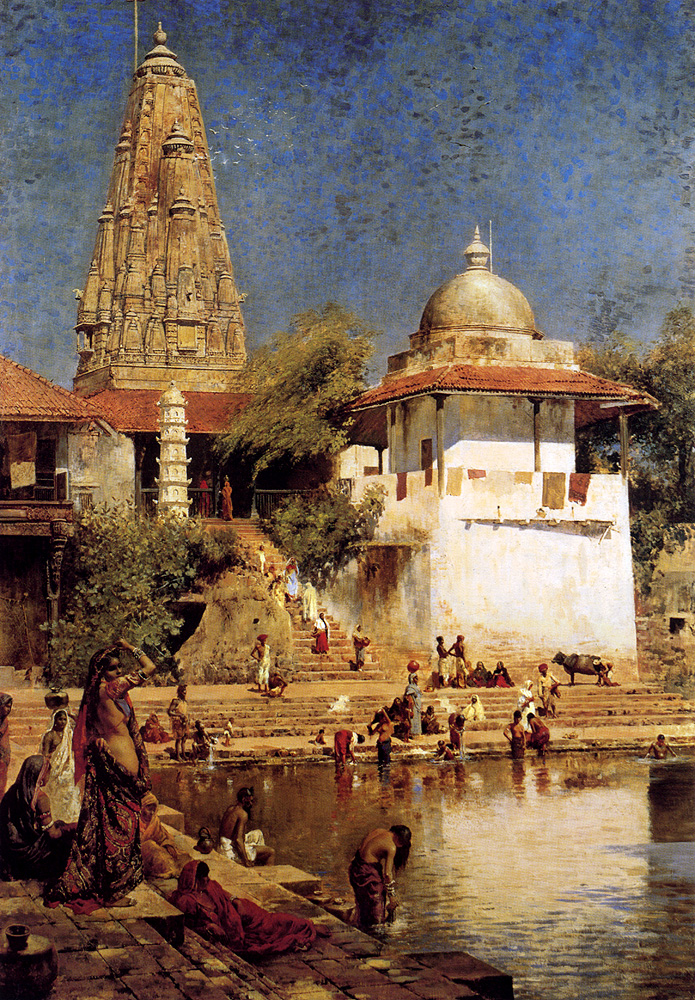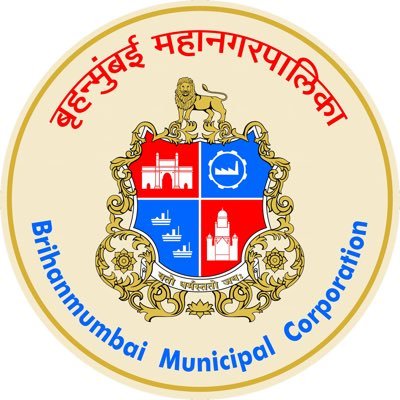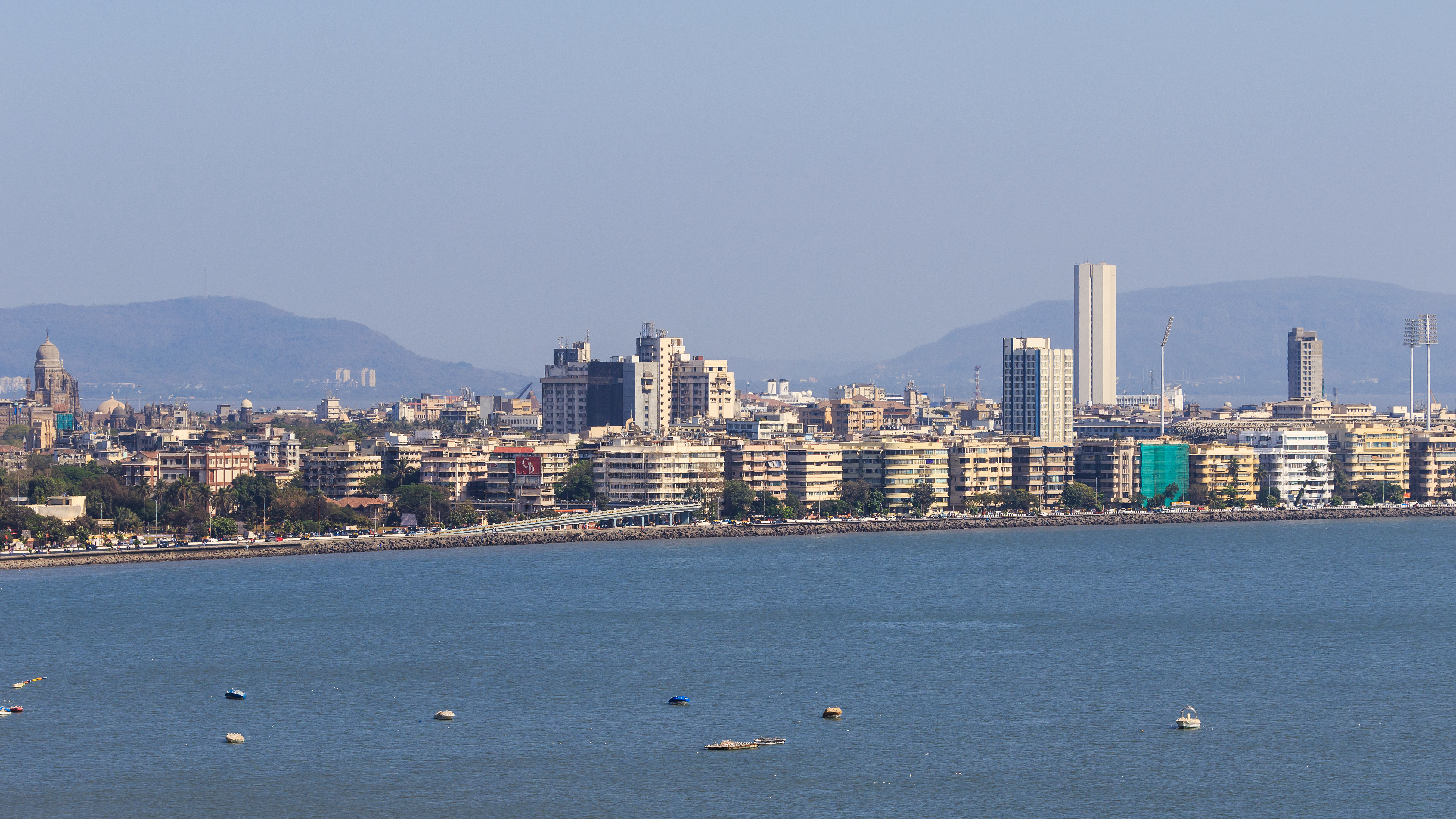|
Walkeshwar
Walkeshwar (Pronunciation: ŗa╦É╔Łke╩ā╩ŗ╔Ö╔Š is an affluent area in South Mumbai, India, at the north-western end of the Marine Drive loop. It has a large Gujarati population. It is mostly known for Walkeshwar Temple, Banganga Tank and Jain temples. Etymology Walkeshwar takes its name after Lord Shiva, one part of the Trinity of Hinduism. The modern form of the word derives from the Sanskrit word for an idol made of sand - Valuka Iswar, an avatar of Shiva - in a legend celebrated at the Walkeshwar Temple, situated at the highest point of the city. Legend Legend has it that Hindu god, Ram paused at that spot on his way from Ayodhya to Lanka in pursuit of the demon king, Ravana who had kidnapped his wife, Sita. Then Lord Rama was advised to worship Shiv linga and he is said to have constructed the original linga of sand, after getting tired of waiting for his brother, Lakshman to bring an idol. The name is etymologically derived from the Sanskrit word for an idol made of sand - ... [...More Info...] [...Related Items...] OR: [Wikipedia] [Google] [Baidu] |
Walkeshwar Temple
Walkeshwar Temple, also known as the ''Baan Ganga Temple'', is a temple dedicated to the Hindu god, Shiva located in Walkeshwar, near Malabar Hill neighbourhood, in South Mumbai precinct of the city of Mumbai, India. It is situated at the highest point of the city, and close to the temple lies the Banganga Tank. Legend Legend has it that Hindu god, Rama paused at that spot on his way from Ayodhya to Lanka in pursuit of the demon king, Ravana who had kidnapped his wife, Sita. Then Lord Rama was advised to worship Shiva lingam and he is said to have constructed the original linga of sand, after getting tired of waiting for his brother, Lakshman to bring an idol. The name is etymologically derived from the Sanskrit word for an idol made of sand -- ''Valuka Iswar'', an Avatar of Shiva. As the story progresses, when Rama was thirsty, as there was no fresh water readily available (only sea water), he shot an arrow and brought Ganges over here. Hence ''Bana'' (arrow in Sanskrit) '' ... [...More Info...] [...Related Items...] OR: [Wikipedia] [Google] [Baidu] |
Banganga Tank
The Banganga Tank is a temple tank which is part of the Hindu Walkeshwar Temple complex in the Malabar Hill area of the city of Mumbai, India. History The tank was built in AD 1127 by Lakshman Prabhu, a minister in the court of Silhara kings of Thane. It was rebuilt in 1715, funded by a donation from Rama Kamath. The main temple has since been reconstructed and is now a reinforced concrete structure of recent construction. Banganga in mythology According to local legend, the temple sprang forth when Rama, the exiled hero of the epic ''Ramayana'', stopped at the spot in search of his kidnapped wife, Sita. As the legend goes, overcome with fatigue and thirst, Rama asked his brother Lakshmana to bring him some water. Lakshmana instantly shot an arrow into the ground, and water gushed forth from the ground, creating a tributary of the Ganges, which flows over a thousand miles away ŌĆō hence its name, ''Banganga'', ie the ''Ganga'' created by a ''baan'' (arrow). The Banganga ... [...More Info...] [...Related Items...] OR: [Wikipedia] [Google] [Baidu] |
Mumbai
Mumbai (, ; also known as Bombay ŌĆö the official name until 1995) is the capital city of the Indian state of Maharashtra and the ''de facto'' financial centre of India. According to the United Nations, as of 2018, Mumbai is the second-most populous city in India after Delhi and the eighth-most populous city in the world with a population of roughly 20 million (2 crore). As per the Indian government population census of 2011, Mumbai was the most populous city in India with an estimated city proper population of 12.5 million (1.25 crore) living under the Brihanmumbai Municipal Corporation. Mumbai is the centre of the Mumbai Metropolitan Region, the sixth most populous metropolitan area in the world with a population of over 23 million (2.3 crore). Mumbai lies on the Konkan coast on the west coast of India and has a deep natural harbour. In 2008, Mumbai was named an alpha world city. It has the highest number of millionaires and billionaires among all cities i ... [...More Info...] [...Related Items...] OR: [Wikipedia] [Google] [Baidu] |
Valuka Iswar
In Hinduism, Valuka Iswar is an Avatar or form of Lord Shiva, which literally means an idol made of sand, Sanskrit:''valuka''= Sand, Ishwara= Lord, ( hi, Balu). Famous Valuka Iswar shrines The ancient Walkeshwar Temple in the Indian city of Mumbai was built under the supervision of minister Lakshman Prabhu of the Silhara dynasty The Shilahara Kingdom (IAST: Śilāhāra; also Sinhara, Shailahara, Shrilara, and Silara) was a royal dynasty that established itself in northern and southern Konkan in 8th century CE, present-day Mumbai and Southern Maharashtra (Kolhapur) du ... to commemorate and worship Valuka Iswar. References Forms of Shiva Hindu studies History of Mumbai {{Hindu-theo-stub ... [...More Info...] [...Related Items...] OR: [Wikipedia] [Google] [Baidu] |
South Mumbai
South Mumbai, colloquially SoBo from South Bombay in Anglo-Indian English, administratively the Mumbai City District, is the city centre and the southernmost precinct of Greater Bombay. It extends from Colaba to Mahim and Sion neighbourhoods, and comprises the city's main business localities, making it the wealthiest urban precinct in India. Property prices in South Mumbai are by far the highest in India and among the highest in the world. Notably Cumballa Hills, Cuffe Parade, Malabar Hills, Breach Candy, Altamount Road-Kemps Corner as well as some parts of Worli are constantly ranked in the Global Property Index. Taj Mahal Hotel, Gateway of India, Victoria Terminus, Ballard Estate, and the Bombay Harbour are some of the most iconic landmarks of South Bombay. Billionaire Mukesh Ambani's $1.5 billion home Antilia is located here and is now a part of the iconic skyline. Most residents of South Mumbai belong to old money business, law, trade and fashion families. Geogr ... [...More Info...] [...Related Items...] OR: [Wikipedia] [Google] [Baidu] |
Marine Drive, Mumbai
Marine Drive is a 3 kilometre-long Promenade along the Netaji Subhash Chandra Bose Road in Mumbai, India. The road and promenade were constructed by Pallonji Mistry. It is a 'C'-shaped six-lane concrete road along the coast of a natural bay. At the northern end of Marine Drive is Girgaon Chowpatty and the adjacent road along links Nariman Point at southern tip to Babulnath and Malabar Hill at northern tip. Marine Drive is situated on reclaimed land facing west-south-west. Marine Drive is also known as the ''Queen's Necklace'' because, when viewed at night from an elevated point anywhere along the drive, the street lights resemble a string of pearls in a necklace. The official name for this road, though rarely used, is ''Netaji Subhash Chandra Bose Road''. The promenade is lined with palm trees. At the northern end of Marine Drive is Chowpatty Beach. This is a popular beach famed for its Bhel Puri (local fast food). Many restaurants also line this stretch of the road. Further ... [...More Info...] [...Related Items...] OR: [Wikipedia] [Google] [Baidu] |
States And Territories Of India
India is a federal union comprising 28 states and 8 union territories, with a total of 36 entities. The states and union territories are further subdivided into districts and smaller administrative divisions. History Pre-independence The Indian subcontinent has been ruled by many different ethnic groups throughout its history, each instituting their own policies of administrative division in the region. The British Raj mostly retained the administrative structure of the preceding Mughal Empire. India was divided into provinces (also called Presidencies), directly governed by the British, and princely states, which were nominally controlled by a local prince or raja loyal to the British Empire, which held ''de facto'' sovereignty ( suzerainty) over the princely states. 1947ŌĆō1950 Between 1947 and 1950 the territories of the princely states were politically integrated into the Indian union. Most were merged into existing provinces; others were organised into ... [...More Info...] [...Related Items...] OR: [Wikipedia] [Google] [Baidu] |
Hindu
Hindus (; ) are people who religiously adhere to Hinduism.Jeffery D. Long (2007), A Vision for Hinduism, IB Tauris, , pages 35ŌĆō37 Historically, the term has also been used as a geographical, cultural, and later religious identifier for people living in the Indian subcontinent. The term ''"Hindu"'' traces back to Old Persian which derived these names from the Sanskrit name ''Sindhu'' (ÓżĖÓż┐Óż©ÓźŹÓż¦Óźü ), referring to the river Indus. The Greek cognates of the same terms are "''Indus''" (for the river) and "''India''" (for the land of the river). The term "''Hindu''" also implied a geographic, ethnic or cultural identifier for people living in the Indian subcontinent around or beyond the Sindhu (Indus) River. By the 16th century CE, the term began to refer to residents of the subcontinent who were not Turkic or Muslims. Hindoo is an archaic spelling variant, whose use today is considered derogatory. The historical development of Hindu self-identity within the local In ... [...More Info...] [...Related Items...] OR: [Wikipedia] [Google] [Baidu] |
British Library
The British Library is the national library of the United Kingdom and is one of the largest libraries in the world. It is estimated to contain between 170 and 200 million items from many countries. As a legal deposit library, the British Library receives copies of all books produced in the United Kingdom and Ireland, including a significant proportion of overseas titles distributed in the UK. The Library is a non-departmental public body sponsored by the Department for Digital, Culture, Media and Sport. The British Library is a major research library, with items in many languages and in many formats, both print and digital: books, manuscripts, journals, newspapers, magazines, sound and music recordings, videos, play-scripts, patents, databases, maps, stamps, prints, drawings. The Library's collections include around 14 million books, along with substantial holdings of manuscripts and items dating as far back as 2000 BC. The library maintains a programme for content acquis ... [...More Info...] [...Related Items...] OR: [Wikipedia] [Google] [Baidu] |
Rama
Rama (; ), Ram, Raman or Ramar, also known as Ramachandra (; , ), is a major deity in Hinduism. He is the seventh and one of the most popular '' avatars'' of Vishnu. In Rama-centric traditions of Hinduism, he is considered the Supreme Being. Rama is said to have been born to Kaushalya and Dasharatha in Ayodhya, the ruler of the Kingdom of Kosala. His siblings included Lakshmana, Bharata, and Shatrughna. He married Sita. Though born in a royal family, their life is described in the Hindu texts as one challenged by unexpected changes such as an exile into impoverished and difficult circumstances, ethical questions and moral dilemmas. Of all their travails, the most notable is the kidnapping of Sita by demon-king Ravana, followed by the determined and epic efforts of Rama and Lakshmana to gain her freedom and destroy the evil Ravana against great odds. The entire life story of Rama, Sita and their companions allegorically discusses duties, rights and social responsibil ... [...More Info...] [...Related Items...] OR: [Wikipedia] [Google] [Baidu] |
Hinduism
Hinduism () is an Indian religion or '' dharma'', a religious and universal order or way of life by which followers abide. As a religion, it is the world's third-largest, with over 1.2ŌĆō1.35 billion followers, or 15ŌĆō16% of the global population, known as Hindus. The word ''Hindu'' is an exonym, and while Hinduism has been called the oldest religion in the world, many practitioners refer to their religion as '' San─ütana Dharma'' ( sa, ÓżĖÓż©ÓżŠÓżżÓż© Óż¦Óż░ÓźŹÓż«, lit='the Eternal Dharma'), a modern usage, which refers to the idea that its origins lie beyond human history, as revealed in the Hindu texts. Another endonym is ''Vaidika dharma'', the dharma related to the Vedas. Hinduism is a diverse system of thought marked by a range of philosophies and shared concepts, rituals, cosmological systems, pilgrimage sites, and shared textual sources that discuss theology, metaphysics, mythology, Vedic yajna, yoga, agamic rituals, and temple building, among other to ... [...More Info...] [...Related Items...] OR: [Wikipedia] [Google] [Baidu] |
Ayodhya
Ayodhya (; ) is a city situated on the banks of holy river Saryu in the States and union territories of India, Indian state of Uttar Pradesh. Ayodhya, also known as S─üketa, Saketa, is an ancient city of India, the birthplace of Rama and setting of the great epic Ramayana. Ayodhya was once the capital of the ancient Kosala Kingdom. It has an average elevation of 93 meters (305 feet). Owing to the belief as the birthplace of Rama, Ayodhya (Awadhpuri) has been regarded as first one of the Sapta Puri, seven most important pilgrimage sites (Mokshdayini Sapt Puris) for Hindus. The early Buddhist and Jain canonical texts mention that the religious leaders Gautama Buddha and Mahavira visited and lived in the city. The Jain texts also describe it as the birthplace of five tirthankaras namely, Rishabhanatha, Ajitanatha, Abhinandananatha, Sumatinath and Anantnath, and associate it with the legendary Bharata Chakravarti. From the Gupta Empire, Gupta period onwards, several sources me ... [...More Info...] [...Related Items...] OR: [Wikipedia] [Google] [Baidu] |






.jpg)



